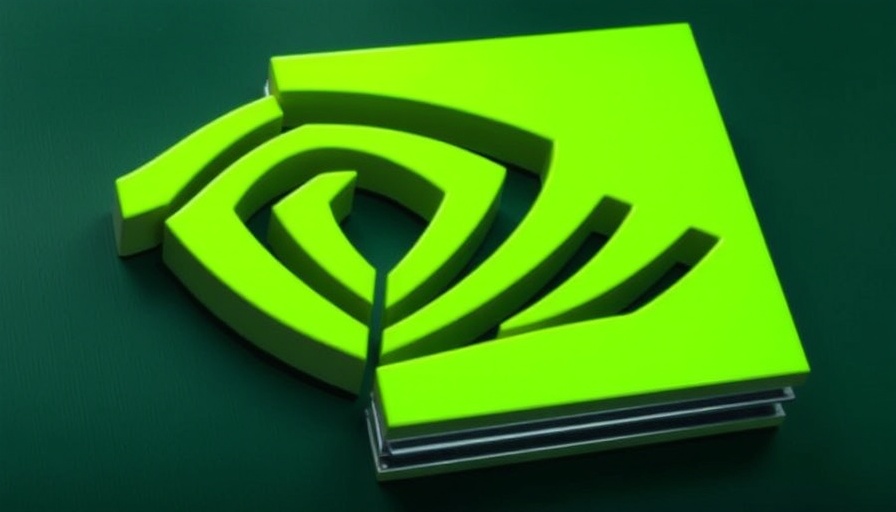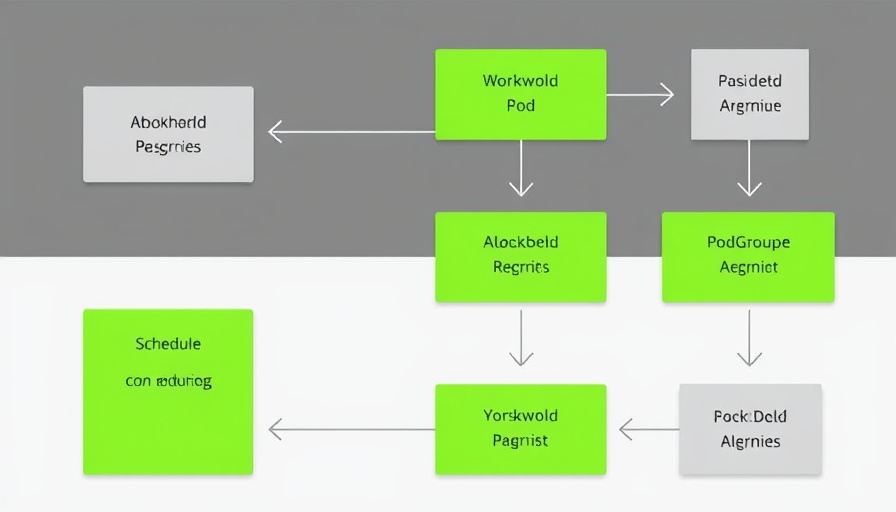
Jim Cramer Sounds Alarm for Nvidia Investors Amid Tech Decline
Nvidia has long been seen as a beacon of hope in the tech sector, particularly following its pivotal role in advancing artificial intelligence (AI). However, recent commentary from CNBC's Jim Cramer indicates that the path forward may not be as smooth as investors had hoped. With stock prices fluctuating and wavering recently, Cramer is advising Nvidia investors to brace themselves for potential turbulence ahead.
The Impact of Market Dynamics
Amidst a market correction, Cramer highlighted Nvidia's recent drop of 5.74%. He characterized Nvidia as the 'linchpin' of technology stocks, proclaiming that the 'pin is failing.' Such rhetoric signals that investors should remain alert as the stability of Nvidia, a leading figure in the AI revolution, may be more fragile than previously believed. The overall tech landscape has been witnessing a downturn, with indices such as the Dow Jones and Nasdaq following suit due to external pressures, including tariff speculation from political leaders.
Understanding the 'Death Cross' Phenomenon
One of Cramer's key observations was the appearance of what is known as the 'death cross' in Nvidia's stock chart. This technical analysis pattern is characterized by a short-term moving average crossing below a long-term moving average, often interpreted by traders as a sign of bearish momentum.
Cramer described this development as a 'terrifying' indicator that suggests rising pessimism regarding Nvidia's stability. This technical insight not only affects trading decisions for Nvidia but can also ripple throughout the tech stock market, as many depend on Nvidia's performance.
AI's Future: Opportunities and Risks
Despite these ominous signs, Cramer remains optimistic about Nvidia's long-term prospects, emphasizing that its technology is crucial for an AI-driven industrial revolution. He believes that Nvidia's innovations in semiconductors and AI will ultimately play a significant role in shaping the future of various industries. However, the current volatility raises important questions for investors about timing and risk management.
The stakes are high, as Nvidia’s fate is largely intertwined with the broader narrative surrounding AI's potential growth and the looming competition from entities like DeepSeek, a startup quickly responding to Nvidia's dominance in the AI sector. Investors must consider both the immediate implications of stock fluctuations while preparing for a more uncertain future landscape.
A Call to Investors
Cramer concluded by encouraging investors to maintain their positions in Nvidia if they believe in its potential, while also preparing for more turbulent times ahead. This duality of hope and caution serves as a reminder to all who are invested in technology stocks: the market is perpetually dynamic, with the specter of change always looming.
For AI enthusiasts, Nvidia represents more than just a stock; it stands at the forefront of a technological revolution. As AI continues to find applications across industries, the implications of Nvidia's performance extend far beyond financial metrics. Keeping an eye on this segment of the tech industry could yield valuable insights into the trajectory of AI as a whole.
Preparing for Future Insights
As we navigate this tumultuous period in the tech market, understanding the underlying currents that drive stock performance is crucial. Investors should not only watch Nvidia for its immediate outcomes but also look for broader trends within the AI landscape. Keeping informed about potential shifts in market dynamics, as well as competitive movements like those from DeepSeek, will empower investors to make more educated decisions in an environment ripe with uncertainty.
Stay updated on AI trends and stock market changes. Understanding the interplay between these realms could be pivotal to your investment success.
 Add Row
Add Row  Add
Add 




 Add Row
Add Row  Add
Add 

Write A Comment